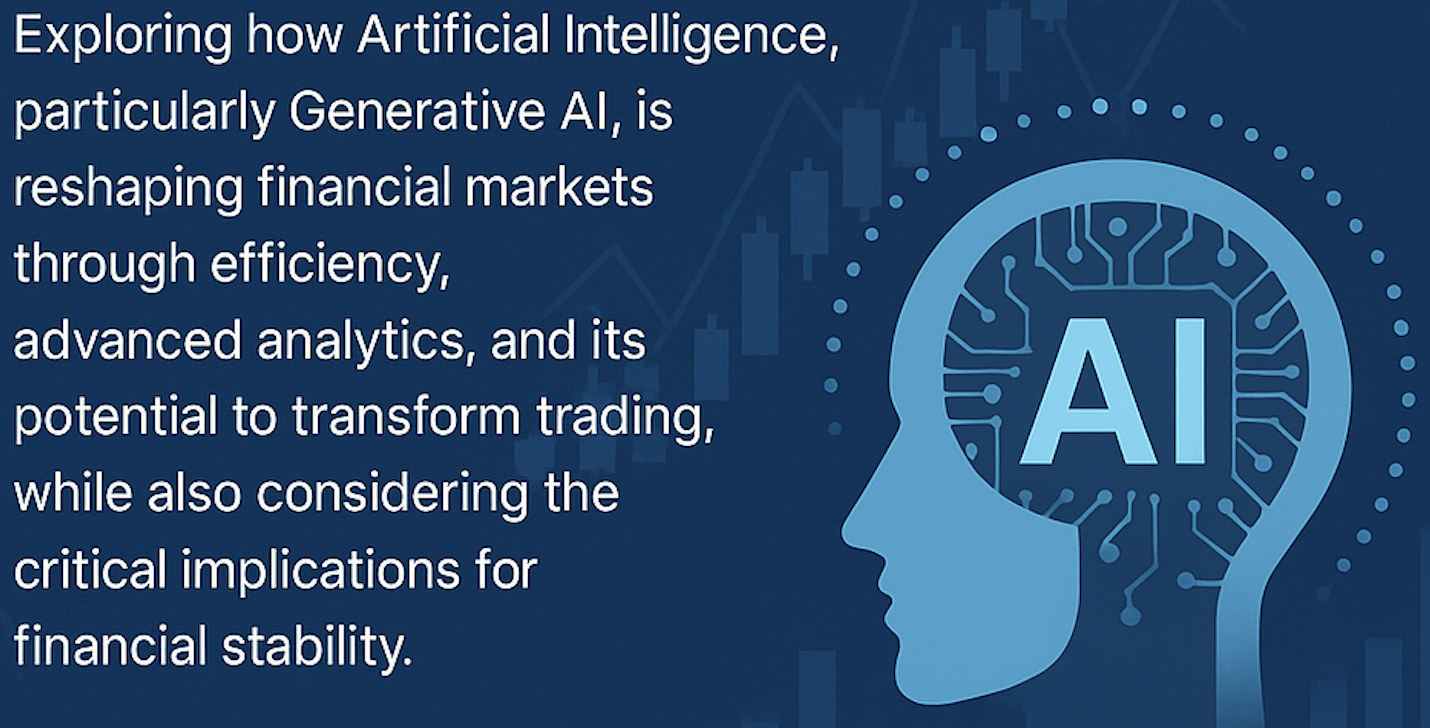Artificial Intelligence and its Impact on Financial Markets and Financial Stability

Advancements in Artificial Intelligence (AI) continue to unfold at a rapid pace. In the coming years, these new technologies enabling computers and machines to simulate human learning, comprehension, and problem solving will become further intertwined with our day-to-day lives. Certainly the financial sector is no exception. There, these technologies—in particular the new and dramatic advances in Generative-AI—are poised to impact financial markets.
AI, as it should be broadly understood, has already been impacting financial markets for many years. This is a part of the economy that has been leveraging data and sophisticated analytical methods for decades to improve efficiency and enhance returns for investors, and in many ways, Generative AI is just the latest stop on this journey.
AI's Threefold Impact on Financial Markets
One might observe the impact of AI on financial markets in 3 areas.
1. Efficiency
In the financial sector, as in many other industries, AI—and in particular Generative AI—is being used to enhance productivity by speeding up and automating many current tasks. From our observation and outreach, we see finance as an industry that is particularly ready to take advantage of these advances, as the efficient processing of data is already central to most activities in finance. Therefore, from back-office operations to customer-facing interfaces, and from research to building analytical models, we expect this to take off rapidly.
2. Evolutionary Improvements
AI, in the form of machine-learning and neural networks, has been used by cutting-edge investment firms for at least ten years, and in our understanding now plays a significant role in the automated and high-speed trading that dominates many of the most liquid and deepest markets in the world. What is new is that the large language models that form the backbone of the most impressive generative AI systems are now enabling investors to process very large amounts of unstructured, often text-based, data to enhance their already powerful analytical tools. This should lead to an improvement of market liquidity in these asset classes, but could also create some financial stability challenges.
3. Revolutionary Transformation
While the evolutionary changes are well underway, the much larger jump from AI-generated model inputs to very sophisticated autonomous AI-driven financial agents still seems far off. Many market observers and academics have been envisioning scenarios and producing papers involving autonomous AIs that generate and execute trades without human oversight, but market participants are not at all comfortable with this idea yet. At present, market participants are not looking for AI-generated strategies that rely on “black box” analyses that result in unexplainable trading patterns. Moreover, most participants view having human oversight as an essential part of any AI-based strategy for regulatory, risk-management, liability, and ethical reasons.
Implications for Financial Stability
We must first acknowledge that AI could be good news from a stability perspective. For financial institutions, AI can bring new opportunities and benefits such as productivity enhancements, cost savings, improved regulatory compliance or RegTech, and more tailored offers to clients. In financial markets, technology has done a tremendous job in improving price discovery, deepening markets, and often dampening volatility in times of stress. And AI is likely to continue these trends as well. However, we have also seen some limited negative impact of quantitative trading in some sudden market dislocations, and there are fears that these risks could rise with the use of AI. We also have to be continuously on the lookout for how AI could exacerbate traditional financial stability channels such as interconnectedness, liquidity, and leverage.
Are Existing Supervisory Frameworks Sufficient?
The level of AI readiness varies substantially across countries, as do the existing frameworks needed to handle these issues. It is important for policymakers to measure the degree of preparedness to be able to identify areas for improvement and assess the need of new tools.
A few critical areas to be aware of:
- From a structural point of view, markets continue to move faster, and we need to make sure that they are ready to deal with the even greater speeds that could come with AI.
- From a monitoring point of view, the rise of AI means that regulators will need the tools to track developments in these changing markets, and, very importantly, the entities acting in them.
- Finally, we are all aware of the danger of cyber-attacks and market manipulation. It is crucial that regulators are able to fight fire with fire, and that they invest in supervisory technology (so called sup-tech) that can use AI to process information and spot fraud and other potential troubles.
Conclusion
The IMF plays a pivotal role in shaping global financial sector policies and collaborates closely with international organizations and standard-setting bodies as new potential risks arise. Such a collaborative approach will be needed to deal effectively with all the challenges and opportunities AI will bring in the years to come.